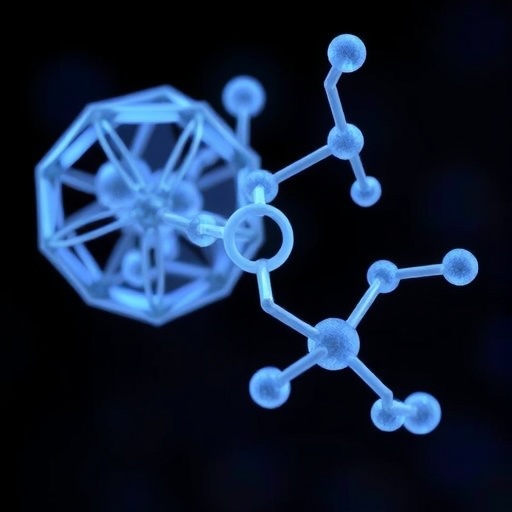In a groundbreaking exploration of synthetic methodologies, researchers have illuminated the complex world of N-arylation of morpholine, a pivotal reaction in organic chemistry that has significant implications in pharmaceutical development. The process of arylation involves the introduction of aryl groups into organic molecules. The research by Mubashra, Ahmad, and Aslam delves into various synthetic routes for achieving this transformation, emphasizing both metal-catalyzed and metal-free methods. Understanding these methods offers chemists enhanced strategies for constructing arylated compounds, which are vital for drug discovery and materials science.
The allure of morpholine derivatives in medicinal chemistry cannot be overstated; they often serve as core structures in numerous biologically active compounds, including antihistamines and antipsychotics. This research highlights the importance of optimizing synthetic techniques to improve yields and operational simplicity. The exploration of both metal-catalyzed and metal-free pathways allows for a more versatile approach to the synthesis, promoting greener chemistry by reducing reliance on heavy metals that pose environmental and health risks.
One of the focal points of the paper is the comparative study of various catalysts employed in the metal-catalyzed N-arylation of morpholine. Systems utilizing palladium and copper catalysts have long been established, yet the authors carefully dissect these methods, assessing their efficiency, reaction conditions, and compatibility with diverse substrates. The findings indicate a marked improvement in reaction yields with optimized catalyst-loading and temperature adjustments, showcasing the need for thorough parameter exploration in catalysis.
In contrast, the metal-free methodologies presented in the study open new avenues for sustainable chemistry. These approaches often leverage alternative reactions, such as the use of electrophilic aromatic substitution or radical processes, that do not rely on traditional catalysts. The versatility of these techniques offers a promising route for chemists seeking to minimize their environmental footprint while still achieving the desired chemical transformations. The authors highlight their findings through experimental data, underscoring successful examples and conditions that researchers can replicate.
The significance of solvent choice in these reactions is a recurring theme in the article. Solvents play a crucial role in influencing reaction dynamics, selectivity, and yield. The authors discuss the emerging trend of employing eco-friendly solvents, including water, which not only eases the separation process but also aligns with the principles of green chemistry. This positions solvent selection as a pivotal factor that may turn out to be equally crucial as catalyst choice in the success of N-arylation protocols.
The article also updates readers on cutting-edge advancements in reaction monitoring and optimization technology. With the increasing integration of artificial intelligence and machine learning into chemical synthesis, it becomes evident that future methodologies will rely on data-driven approaches to determine optimal reaction conditions. These technologies promise to expedite the discovery of novel N-arylation processes, making synthetic chemistry more efficient and informed.
As the authors delve deeper, they explore potential pitfalls in N-arylation reactions and how those can be navigated. Side reactions and by-product formation are common issues that can hinder yield and purity. However, the strategies outlined in the article offer significant insights into troubleshooting such challenges, encompassing everything from procedure adjustments to purification strategies aimed at enhancing the overall quality of the final product.
Moreover, the integration of biocatalytic strategies into the realm of N-arylation is another groundbreaking aspect of this research. The application of enzymes can provide an innovative pathway for conducting arylations under mild conditions. Such biocatalytic processes not only increase reaction efficiency but also reduce the necessity for hazardous reagents, reinforcing the advancement towards sustainable laboratory practices.
Examining real-world applications, the authors underscore the growing importance of morpholine derivatives in the pharmaceutical industry. Several case studies highlight recent drug developments that incorporate these compounds, reinforcing the need for robust synthetic methods. By effectively providing chemists with advanced tools for N-arylation, this research could expedite the production of several promising new drugs that specifically contain morpholine structures.
The authors also consider the impact of regulatory standards on synthetic research and development. As environmental regulations tighten, the pressure to develop more sustainable techniques within synthetic organic chemistry grows. Highlighting the importance of adhering to these standards, the authors advocate for the continued exploration of metal-free methodologies, which align well with regulatory compliance while fostering innovation in chemical transformations.
Looking to the future, the research lays down a roadmap for potential collaborations between academia and industry. The challenges of scaling laboratory methods to an industrial level require effective communication and innovation-sharing between chemists in both sectors. Emphasizing the collaborative spirit, the findings encourage dialogue and partnership to seamlessly translate laboratory breakthroughs into applicable industrial processes.
In conclusion, the work presented by Mubashra, Ahmad, and Aslam serves as a timely contribution to the field of synthetic organic chemistry. Their insightful examination of N-arylation routes not only highlights the advantages of various methodologies but also reinforces the need for sustainability in chemical practices. As the chemical community continues to grapple with environmental and practical constraints, studies such as this one pave the way for more efficient, eco-friendly approaches to complex organic transformations.
By shedding light on the synthetic routes for N-arylation of morpholine, the authors provide a significant resource for researchers seeking to enhance their synthetic repertoire. As the quest for novel arylated compounds continues in the world of drug development and beyond, the pursuit of efficient, sustainable methods will undoubtedly be at the forefront of chemical innovation.
Subject of Research: N-arylation of morpholine using metal-catalyzed and metal-free methods.
Article Title: An insight into the synthetic routes for N-arylation of morpholine using metal-catalyzed and metal-free methods.
Article References:
Mubashra, S., Ahmad, M. & Aslam, S. An insight into the synthetic routes for N-arylation of morpholine using metal-catalyzed and metal-free methods. Mol Divers (2025). https://doi.org/10.1007/s11030-025-11313-4
Image Credits: AI Generated
DOI: 10.1007/s11030-025-11313-4
Keywords: N-arylation, morpholine, metal-catalyzed methods, metal-free methods, sustainable chemistry, organic synthesis, pharmaceutical development.




